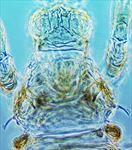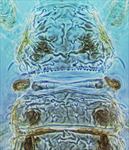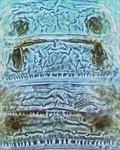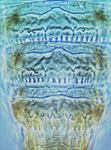
Wingless female

Antenna

Head & pronotum

Pronotum & mesonotum

Mesonotum, metanotum & tergites I–II

Tergites VI–VIII
Female minute, usually wingless, with all major setae flattened and curved except at abdominal apex. Body and legs mainly yellow, with pair of dark spots laterally on each segment; eyes with four pigmented ommatidia. Antennae 8-segmented; segment III smaller than II and with no sense cone, IV with simple sense cone. Head with eyes bulbous, much wider than cheeks. Pronotum trapezoidal, surface coarsely sculptured, posterior margin with row of tubercles; major setae translucent and curved. Meso and metanotum transverse. Abdominal tergites I–VIII posterior margins with craspedum of rounded lobes; tergites each with two pairs of major, curved discal setae. Sternites II–VII with about 10 small discal setae.
Male similar to female; sternites III–VII with transverse pore plate.
Four species are currently placed in the genus Kurtomathrips, two from south western USA, one from Mexico and one from Argentina, although the Mexican species is possibly a synonym (de Borbon, 2004). These minute, usually wingless, thrips all seem to be associated with the plant genus Parthenium.
Breeding on leaves, and particularly associated with Parthenium hysterophorus [Asteraceae], although reported by Bailey (1957) as damaging cotton and also chrysanthemum.
Probably originally from Western USA, but widely recorded from California, Arizona, New Mexico, Nevada, Texas, Florida, Hawaii, Jamaica, and India.
THRIPIDAE - THRIPINAE
Kurtomathrips morrilli Moulton
Kurtomathrips morrilli Moulton, 1927: 188
de Borbón CM (2004) First record of the genus Kurtomathrips (Thysanoptera: Thipidae) in Argentina with description of a new species. Revista de La Sociedad Entomológica Argentina 63 (3-4): 49–53.